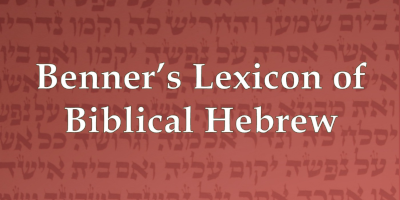Perspective of the Lexicon
The first and foremost concept that a reader of the Biblical text must learn is that the ancient Hebrews were products of an eastern culture while you, the reader, are the product of a western culture. These two cultures are as different as oil and vinegar; they do not mix very well. What may seem rational in our western minds would be considered irrational to an easterner of an ancient Near East culture. The same is true in the reverse, what may be rational to an ancient Easterner would be completely irrational in our western mind.
The authors of the Biblical text are writing from within their cultural worldview and in order to fully understand the text, the reader must interpret this text from within the culture and thought processes of the Hebrew people.
All existing Hebrew Lexicons of the Bible convert the vocabulary of the ancient Hebrews into a vocabulary compatible to our modern western language. The greatest problem with this is that it promotes western thought when reading the Biblical text. In this Lexicon the mind of the reader is transformed into an eastern one in order to understand the text through the eyes of the ancient Hebrews who penned the words of the Bible.
The Ghayin and the Samehh
While the Modern Hebrew alphabet has 22 letters, there is evidence that it, like most other Semitic alphabets, had between 26 and 28 letters. One of these “missing” letters is the ghayin, which even exists in Arabic today. At some point in history, the Hebrew alphabet replaced the ghayin with the letter ayin. This lexicon includes the ghayin as a 23rd letter in the Hebrew alphabet.
In the Modern Hebrew alphabet, the letter shin has two sounds, sh, called a shin, and s, called a sin. Evidence suggests that the sin was originally a samehh and this lexicon reflects this by replacing the letter sin with a samehh.
Identifying Words and Roots
Parent roots (pr) are two-letter root words, from which all other roots and words are derived. To the right of the Hebrew parent root is an English transliteration. This is followed with the action (Act), object (Obj) and abstract (Abs) ideas associated with this parent root. Next is the definition (Def) of the root and then connections of this root with the Ancient Hebrew (AH).
Derived from the parent roots are child (ch) and adopted (ad) roots. A child root is identified by one of four Hebrew letters, aleph, hey, vav or yud, placed in front, in the middle or behind the letters of the parent root. In Ancient Hebrew, these four letters were used as consonants and vowels. An adopted root is identified by any other letter being placed within the parent. When known, the relationship to the parent root (Rel) is identified.
Derived from the parent, child and adopted roots are verbs (vrb) and nouns, each of which include an identifying number at the left margin. All nouns are identified as either masculine (masc), feminine (fem) or, in rare instances, common (com).
Following the transliteration of the Hebrew word is a one, or two, word translation (Tran) and occasionally, alternate translations (Alt) of the word. Following the translation is the words definition (Def), the translations of this word in the King James Version (KJV) and the Hebrew words corresponding Strong’s number.
Following the Strong’s number is the Hebrew word’s corresponding Aramaic word when applicable. If the spelling or definition of the Aramaic word is different from the Hebrew, the unique Aramaic spelling and/or definition will be included.



